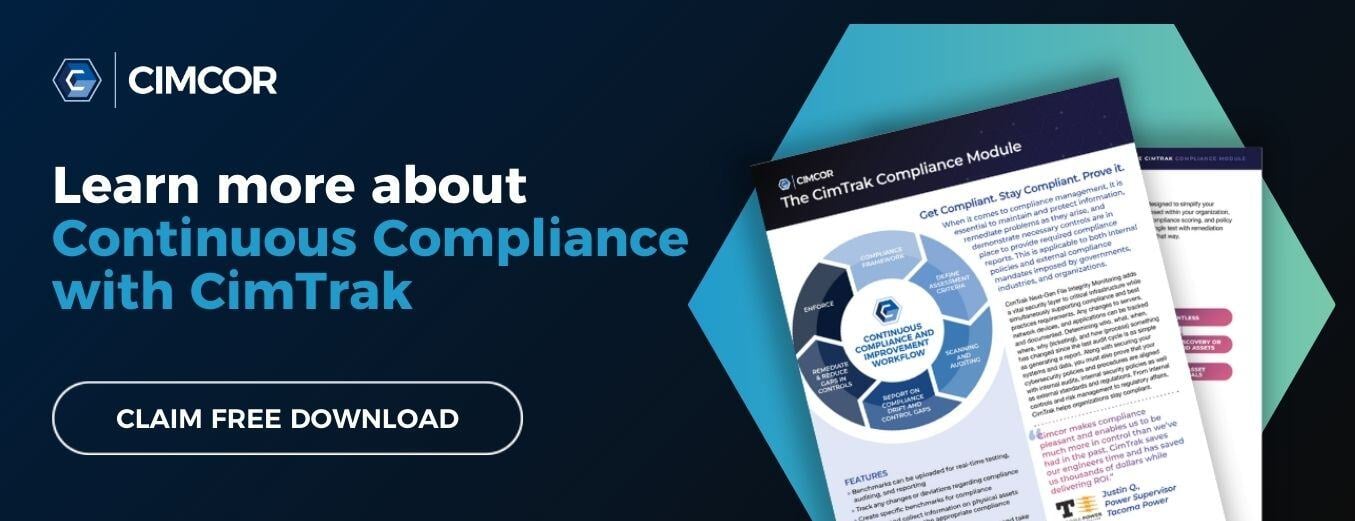Peanut butter and jelly. Thunder and lightning. Cyber security and compliance.
Just because your data is secure does not mean you are in compliance. Just because you’re compliant also doesn’t mean that your network is fully secure.
How can you maintain security and compliance and make your efforts for both work together?
Let’s take an in-depth look at the four most common mistakes organizations make with cyber security and compliance.
The Relationship between Cyber Security and Compliance
In today’s world, robust cyber security efforts and protocols are vital for every business, from small businesses to massive enterprises. At its most basic level, the term “cyber security” refers to your efforts to protect your organization’s data, systems, and devices from cyber attacks.
Cyber security is more important now than ever, with cyber attacks on the rise. The number of attacks grew over fifteen percent year over year in 2021 and shows no signs of slowing. Without the proper cyber security processes in place, your organization is at increased risk of a breach.
Many regulatory agencies and other authorities have best practices and requirements in place to help businesses maintain a high level of cyber security. Businesses must comply with these requirements to secure customer information and other organizational data. Additionally, if an organization fails to maintain compliance with the required industry regulations, they may be subject to fines, penalties, or even jail time, depending on the severity of the offense.
Related: How to Identify Database Security Threats in 5 Steps
Some of the most common cyber security compliance requirements organizations need to adhere to include:
- HIPAA: The Health Insurance Portability and Accountability Act of 1996 protects sensitive patient data. Any data that ties medical records to an individual’s identity is subject to HIPAA compliance regulations.
- PCI DSS: The Payment Card Industry Data Security Standard protects consumer credit card information. These standards regulate how businesses can process and store payment card information.
- NIST 800-171: This document regulates how contractors and sub-contractors of Federal agencies manage and maintain Controlled Unclassified Information.
- NERC-CIP: The North American Electric Reliability Corporation Critical Infrastructure Protection sets forth a series of standards designed to increase the security of the electrical system in North America.
To see what standards apply to your business, see our post IT Compliance Standards: Which Regulations Apply to Your Business?
1. Neglecting Staff Training
Your cyber security software solution is only as strong as your least secure team member. If your staff does not know how to recognize social engineering attacks like phishing, it will make it easier for a cyber attacker to breach your perimeter.
Some of the top cyber security training topics to consider for keeping your staff informed include:
- Creating a strong password
- Using Multi-Factor Authentication
- Recognizing phishing attempts
- BYOD policies and best practices
Staff may be reluctant to change their processes to behave more securely. You’ll need proper policies and practices in place to ensure that your staff engage in strong security practices daily. This knowledge will help create a cultural shift toward embracing a secure mindset.
2. Selecting the Wrong File Integrity Monitoring Solution
Maintaining continuous compliance is challenging. You’ll need a strong File Integrity Monitoring solution to ensure you have the necessary documentation. If you select the wrong File Integrity Monitoring solution, you may end up battling unnecessary headaches.
When researching File Integrity Monitoring solutions, you’ll want to consider all available features. Each organization has slightly different needs, and each solution has slightly different features. Some features you’ll want to consider include:
- Real-time automated detection
- Continuous change-logging
- Dynamic version control
- Immediate change reconciliation
- Unexpected change prevention
Our solution CimTrak, offers these features and more, helping you achieve continuous compliance with our System Integrity Assurance and File Integrity Monitoring solution. CimTrak’s compliance module helps you leverage CIS Benchmarks and DISA STIGs to confirm that your systems are hardened appropriately.
Additionally, CimTrak helps you gather the evidence and reports you need for your audits, helping you avoid costly fines while simultaneously reducing manual labor and costs. Request a demo of CimTrak today to see if our solution is right for your organization.
3. Underestimating Insider Threats
One common cyber security mistake organizations make is assuming any activity that happens inside the perimeter is trustworthy. However, according to studies, upwards of sixty percent of all data breaches originate from insider threats.
What is an insider threat? Insider threats vary in nature, but the crux is that they are attacks carried out by someone who accesses your database using an employee’s login credentials. Sometimes, the attacker is an employee with malicious intent. Other times, employees may fall prey to social engineering attacks and provide their credentials to an attacker.
The best way to defend against insider threats (aside from engaging in staff training to help employees at every level understand security protocols) is to implement robust File Integrity Monitoring processes.
Using a tool like CimTrak can help you detect changes to critical files in your network, including system, application, and configuration files. With our solution, you can fully understand who changed what information and when they changed it. This information can help you quickly find the source of an insider threat, allowing you to recover and remediate more effectively.
4. Forgetting Mobile Devices
In the years following the lockdowns in early 2020, the world has shifted toward a significant increase in remote or hybrid work environments. This shift has caused multiple challenges for cyber security professionals. One of those challenges is an increase in BYOD policies.
BYOD, or Bring Your Own Device, allows workers to access organizational data from their mobile phones, personal computers, or tablets. You may also have employees accessing data in off-hours as more employees work flex schedules.
Related: The 7 Scariest BYOD Security Risks (and How to Mitigate Them!)
Your business will need strong BYOD policies indicating what type of data can and cannot be accessed from personal devices. Additionally, employees should know what security measures they need to enact on their personal devices to help your organization maintain compliance.
Lastly, you may want to consider Just-in-Time (JIT) policies. These types of access policies limit employee access to the data they need only when they need to access said data.
Managing Cyber Security and Compliance Without The Headache
The four items listed above are some of the most common mistakes organizations, and security professionals make regarding cyber security and compliance.
By accounting for these four challenges, you can set your team and your business up for success in its cyber security measures, practices, and policies. You may also want to implement a robust File Integrity Monitoring solution, like CimTrak, to assist in your cyber security and compliance efforts.
For more compliance information, tips, and best practices, check out our free resources on various compliance requirements across industries, such as our Compliance Module Brief.
Tags:
Compliance
December 15, 2022




